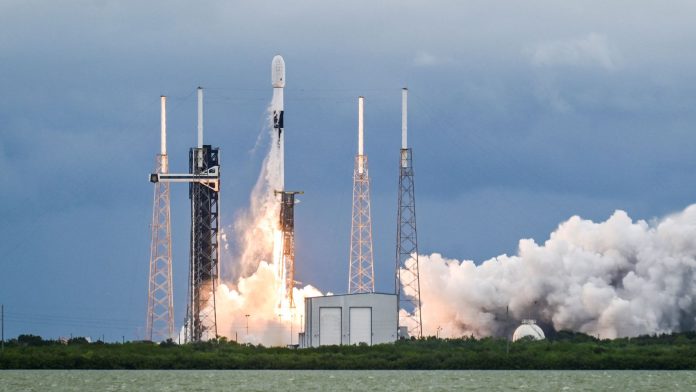The European Space Agency (ESA) has successfully launched Hera, its first planetary defence mission designed to assess whether future asteroids can be deflected from a collision course with earth.
A SpaceX Falcon 9 rocket lifted off on Monday from the Space Force Station at Cape Canaveral, Florida, sending the European interplanetary station Hera on a departure trajectory.
The spacecraft will visit the twin asteroid system of Didymos and Dimorphos to assess the impact of the DART kamikaze probe, which will help deflect dangerous asteroids away from earth in the future.
The DART mission ended in October 2022 when the 750-kg probe slammed into asteroid Dimorphos, which is about 160 metres in size. Dimorphos orbits the noticeably larger, 780-metre asteroid Didymus. The impact altered Dimorphos’s orbit, shortening the duration of one revolution by about 32 min to 11 h 23 min. If it was possible to do this with a test asteroid, it may work in the event of a deadly threat to earth from another asteroid. However, scientists lack the data to make accurate calculations and ESA’s Hera probe should fill that gap.
Hera was originally scheduled to fly with DART and take video of the collision. EU authorities delayed the adoption of the mission’s budget, and it will now take place years after the impact. However, this does not cancel its exceptional value. At the moment, scientists do not have data on the exact structure and even the topography of both asteroids. All they have are muddy images from the Italian cubesat, which was dropped from the DART probe minutes before its demise, as well as observations from telescopes.
In March 2025, the Hera probe will circle Mars for a gravity manoeuvre and take close up images of one of its satellites, Deimos. The station will reach the target asteroid system in October 2026. This will be the start of Hera’s six-month mission to study Dimorphos and Didymus. The greatest convergence of the station and Didymos should be about 1 kilometre. Some anxiety in scientists cause debris from the asteroid, which could linger in the system after the impact of the probe DART. But previous probe missions to the comet and other asteroids suggest that a serious threat is not expected.
